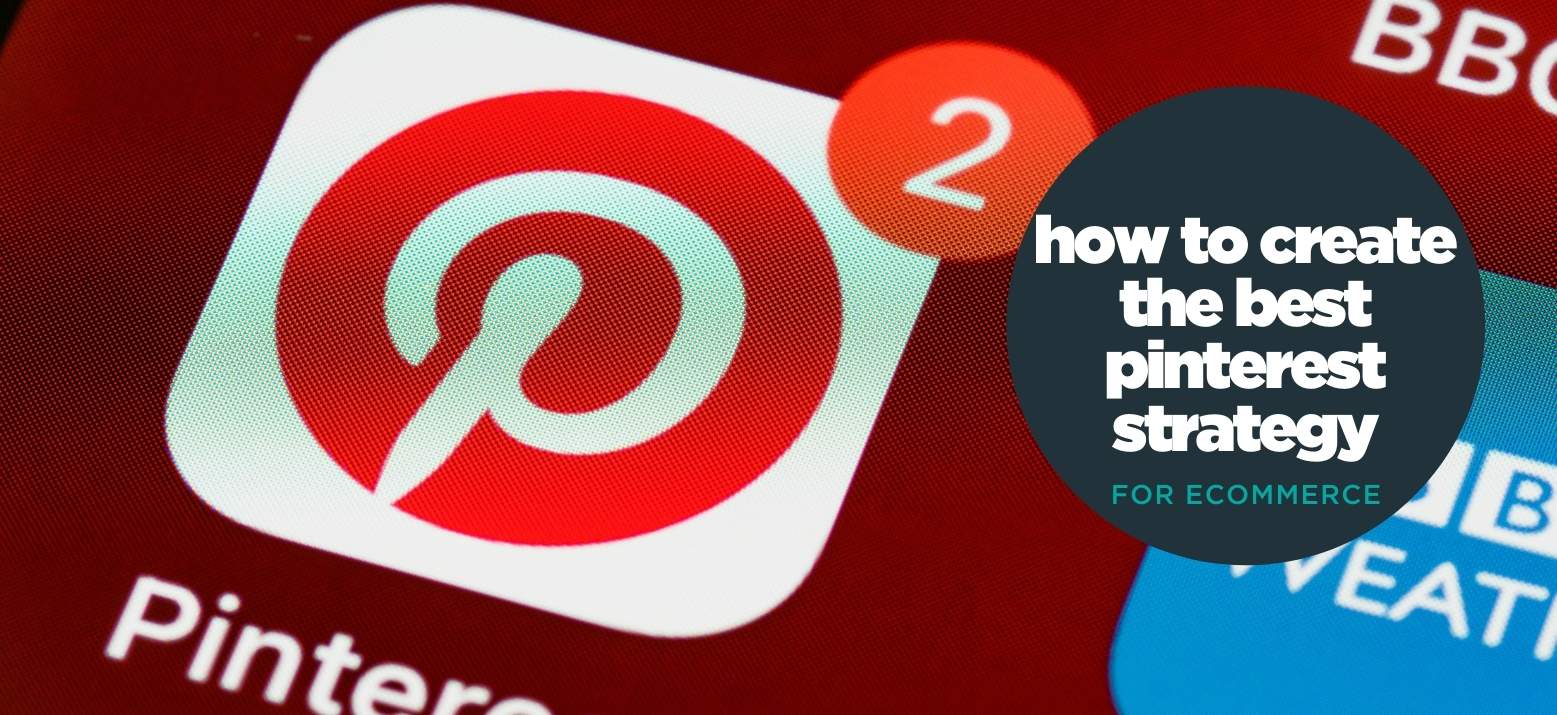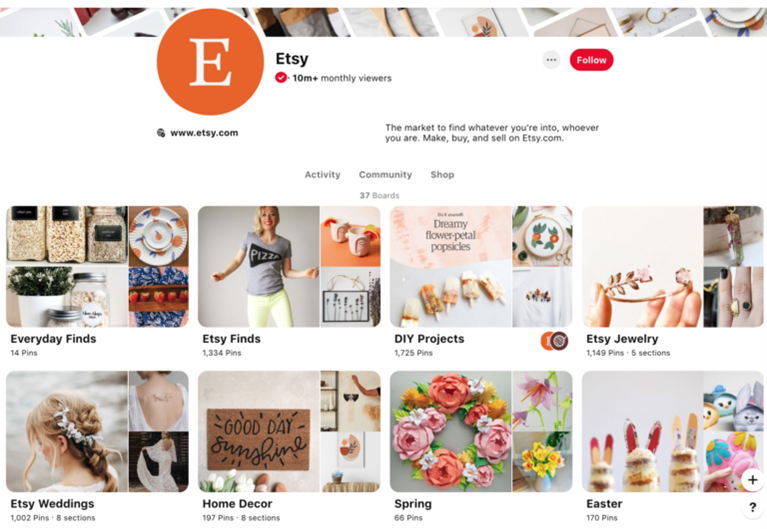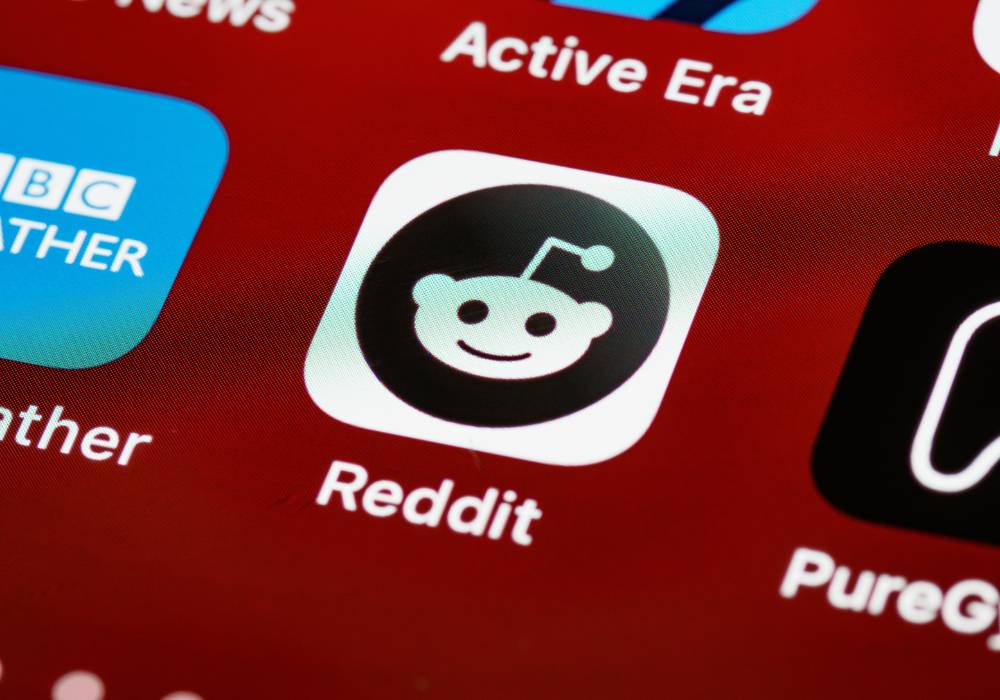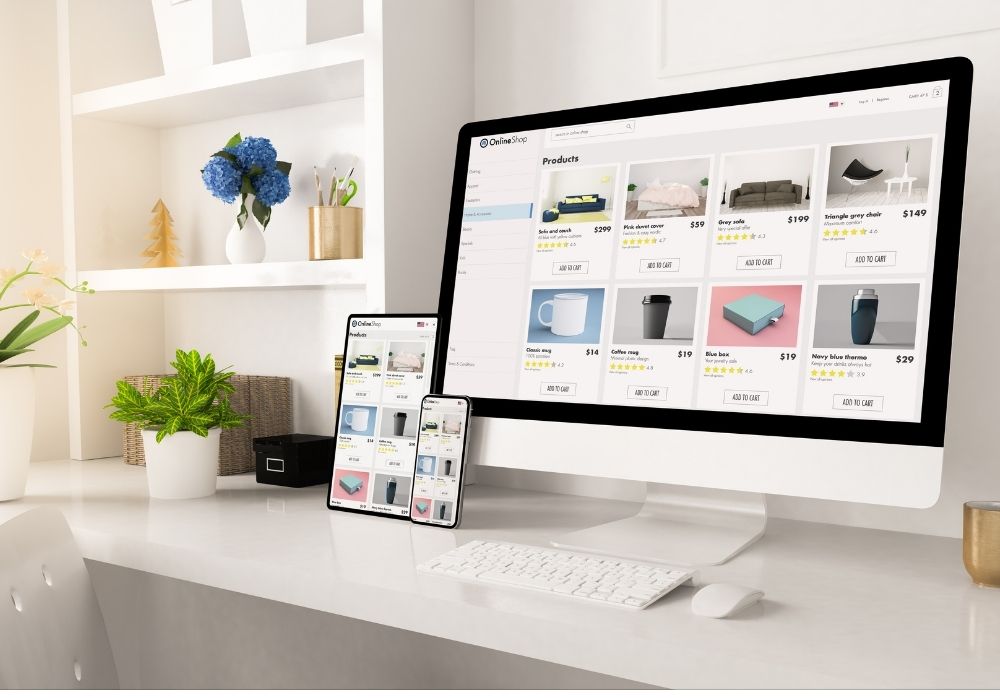In a lot of cases, many consumers only really know about a brand because of social media, so having an online presence on these platforms is essential as an ecommerce business.
Unlike other social media platforms, potential sales through Pinterest may be easier than you would originally think. Once you’ve garnered a following and posted enough excellent content using the best practices covered in this guide, a lot of the work is already done. It allows a more “come and go” approach for shoppers and seems to be an often-overlooked tool for ecommerce businesses.
The image sharing and social media service, launched in 2010, has evolved immensely into the platform it is today.
After mostly being used as a site in which users would garner inspiration for things like home décor and outfit styles, Pinterest has since become a platform in which businesses can directly link their pins to products on their website, and thus means that when users see something they like they can click through directly, allowing Pinterest to generate more traffic and sales for an ecommerce business.
So, why use Pinterest?
Pinterest ecommerce stats:
Pinterest currently has a $50 average sales order, which is higher than any other social media platform. On top of this, 93% of the site’s users say they use the platform to plan future purchases.
87% of the platform’s users have bought a product because of Pinterest.
97% of searches on Pinterest aren’t brand-related either, so focusing on using keywords in pin titles is an excellent way for your business to appear in searches.
Users of the site are also three times more likely to click on a business’s website on Pinterest than any other social media platform, solidifying the idea that Pinterest is the place to be if your goal is to drive traffic to your website and your products lend themselves to visual inspiration.
Not only this, but 91% of people say that Pinterest is a positive place, and therefore users are more likely to purchase from businesses they find on positive platforms.
One of Pinterest’s biggest selling points is the fact that it brings in 33% more referral traffic to user websites than Facebook, despite Facebook’s 2.5 billion users.
But what exactly is Pinterest’s user audience?
- 71% of users are female
- 34% of users are 18-29
- 35% of users are 35-49 years old
- 16% of users are male
- 64% of users reported using the platform to search for new ideas, inspiration, and products that they can trust
How to get Pinterest traffic
So, what Pinterest traffic strategy can you apply to your own business?
1. Organisation
With the ability to create multiple different boards, Pinterest allows you to create something different for each product or service that your business has to offer, engaging audiences in content that is specific to their search or interest.
2. Keywords
Using relevant keywords in the names of your boards and in your pin descriptions ensures that your content will reach its intended audience. To generate as much traffic as possible, make sure you do some background research on your target audience – what keywords are they searching for the most?
Companies like Etsy make excellent use of popular keywords when creating their pins.
3. Upload pins via your website
When you upload a pin from your own website, Pinterest emphasises the connection between the pin and its original source link, so this way when someone re-pins your pin, your website will continue to remain the source, thus potentially driving more traffic onto your site as the visibility of the pin grows organically.
4. Timings
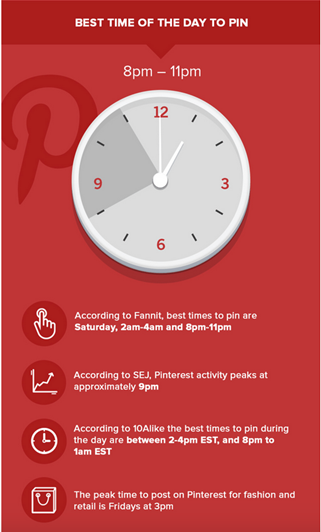
5. Consistency
If you want to get more followers on Pinterest and more engagement on your website, you have to be posting consistently on the platform. Spreading out your posts throughout the day rather than spamming is key.
Following these steps to ensure that your pins, and therefore website links, are getting as much exposure as possible also makes it a huge benefit for SEO, because Pinterest pins often appear in search results, especially for people using the images filter.
Perfecting your Pinterest traffic strategy
Remember to make sure that you go in with a sensible set-up in terms of the buying process once someone arrives on your site via Pinterest. Your conversion rate will never reach its potential heights if you’ve made it difficult for new customers to access and purchase your product online.
Some of the most important factors to double and triple check, to ensure you get the highest conversion rate possible, can include:
1. Making sure you attach the correct links to your pins
Ensuring that the links on your pins actually lead to the correct product that you want them to is vital in increasing your conversion rate. Similarly, make sure that the links themselves aren’t broken, otherwise they’ll just lead to a 404 error and give a poor user experience, as well as sending a negative signal to search engines.
2. Ensure the images on your Pinterest go with the images on your website links
Your pin image doesn’t necessarily have to be the exact same as that on the page that the link leads to, but it still has to be relevant to the content of the link otherwise you could confuse customers and therefore lose their interest.
3. Avoid listing in Pinterest descriptions
Make sure the descriptions for your pins seem natural. Yes, include keywords in order for your content to reach its intended audience, but you still want consumers to be engaged by your content, so keep your descriptions as natural as possible.
So, why not give Pinterest marketing a go?
Uploading the best content that you can, showing your products off in their best light visually, and consistently updating your pins, can all help you to make the most of this powerful tool to engage new consumers for your ecommerce business.
The platform is so straightforward to use, and if you use it in the right way while putting in the necessary effort, it can make a huge difference in the way you reach your intended audience and start to see results. Making your content attractive, helpful and easy to understand, along with being consistently updated, it’s an excellent opportunity for your site to increase conversion rates by sending this highly relevant traffic towards your business.

